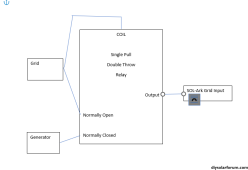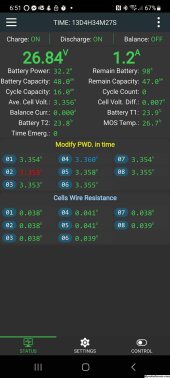byteharmony
Sunny side up please.
Does anyone have any thoughts about using the relay idea detailed below to automate the grid and generator input to my sol ark 15k grid input.

Pardon the word art, I'm traveling and don't have VISIO or something better.
The relay would before the 2 hot wires, 200 AMPS from the grid, 30 AMPS from the little generator.
Neutral and ground would all be connected all the time.
I've seen a few automatic transfer switches, $700 - $2000.
I've seen one relay that seems like it could do it $600
 Is
Is
Does someone have a recommended relay or auto transfer switch?
You may wonder why I want to do this with an Sol Ark 15K having a generator input. The answer is that I want to use the generator input for AC Coupled solar power. Sol Ark support seemed less than confidant when I asked them if I could AC Couple the power on the load side of the sol ark. - I'm going to start a thread on that if it doesn't exist.
With this system I'd never need to switch my input wiring and I could even rig up some automation for starting and stopping the generator.

Pardon the word art, I'm traveling and don't have VISIO or something better.
The relay would before the 2 hot wires, 200 AMPS from the grid, 30 AMPS from the little generator.
Neutral and ground would all be connected all the time.
I've seen a few automatic transfer switches, $700 - $2000.
I've seen one relay that seems like it could do it $600
 Is
IsDoes someone have a recommended relay or auto transfer switch?
You may wonder why I want to do this with an Sol Ark 15K having a generator input. The answer is that I want to use the generator input for AC Coupled solar power. Sol Ark support seemed less than confidant when I asked them if I could AC Couple the power on the load side of the sol ark. - I'm going to start a thread on that if it doesn't exist.
With this system I'd never need to switch my input wiring and I could even rig up some automation for starting and stopping the generator.




